boostedblog
24 posts
Boosted is New Zealand’s crowdfunding platform for the arts. The Boosted School of Crowdfunding provides specialist advice in how to plan and execute successful crowdfunding campaigns. We have the highest success rate of any platform, because we are in it with you.
Don't wanna be here? Send us removal request.
Video
Boosted Ambassador Jess Holly Bates shows you how to crowdfund your arts project in three easy steps! Step 1: How Boosted works
0 notes
Video
Boosted Ambassador Jess Holly Bates shows you how to crowdfund your arts project in three easy steps! Step 2: Tell your story
0 notes
Video
Boosted Ambassador Jess Holly Bates shows you how to crowdfund your arts project in three easy steps! Step 3: Who is your crowd?
0 notes
Text
The Value of Art

Kiwi artists are often scared of asking for money, but art has value.
We’re very fortunate to have organisations like the New Zealand Film Commission and Creative New Zealand.
Their existence allows us to finance our creative endeavours and tell our stories, but unfortunately not all projects can be funded, and some just won’t fit the guidelines for funding.
So, like many international artists who don’t rely on government handouts, we either get a job that pays in currency, or we raise funds through private or corporate donations to create work.
Crowd-funding is the platform to make this process easier and accessible, but to explain “how to ask”, you must first consider why you are asking for money.
Why does your project have to be made?
Answering this question will help identify the audience that want your project to be made and may support your campaign.
Tip: If you can’t answer why your project should be made, then perhaps it’s a good time to pull the plug.
When I crowdfunded my Loading Docs project “Blood Sugar” on Boosted, we reached out to communities who could relate to our message.
The reason WHY I wanted to make this project, was to raise awareness of Paediatric Type One Diabetes - a medical condition my four year old daughter has - which I knew nothing about until her diagnosis.
For my own creative interest and to make it a more fun process, I filmed the entire story through her childish perspective; making it more accessible and sharable.
The answer to HOW we asked for donor support came from the WHY.
I joined online groups that exist specifically for raising awareness of Type One Diabetes, and followed social media accounts to reach out to other parents of children with diabetes. With their support and a shared goal in ‘why’, we quickly smashed our crowd funding target and had magazine and newspaper coverage before we’d even shot the film. When the project launched months later, our Boosted support network helped us reach well over 100k views in our first month online.
The reason you are making the project may also identify a potential corporate partner to be a match donor. Refer: What is a Match Donor?
Increasingly, the privileged are taking over the arts but it doesn’t have to be this way. For some artists, crowd-funding may be the first time you put a value on your work, but supporting an artist is different than paying for a product, it just requires a little confidence and a clear explanation of why your art needs to be made.
vimeo
This blog post was written by Joe Hitchcock, Boosted Ambassador for Film. To read more about Joe and the Boosted ambassadors, visit our website.
0 notes
Text
How Much Does Crowdfunding Cost?
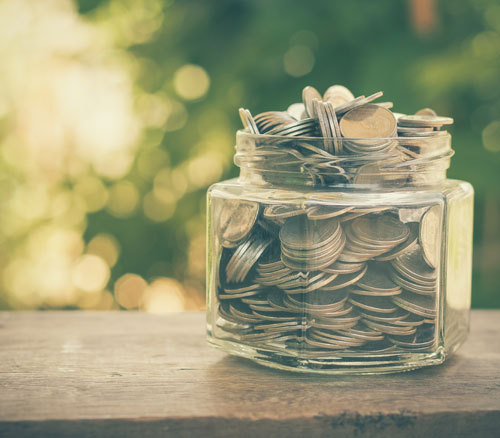
The point of crowdfunding is to gather a crowd who can support you to make your art or creative project happen. However, every crowdfunding website has their own set of fees, costs, and benefits. So it’s important to do your research, weigh the pros against the cons, and find out which site will be the best fit for your project.
We’ll walk you through the different costs of rewards-based and donation-based crowdfunding so you’re familiar with what each form provides.
What type?
There are two main models of crowdfunding for arts and creative projects: rewards-based and donation-based. Boosted is a donation-based platform, which means project owners accept donations to their project without promising a reward in exchange, except for the glow of generosity and the completion of the project. Conversely, rewards-based platforms oblige the project owner to provide rewards – usually different levels of reward in exchange for different sums of money from the backers.
Boosted donors support donation-based crowdfunding because they want to see the project happen. They don’t need a t-shirt or postcard to encourage them to donate. The time and cost of creating rewards can detract from the art making or creative process, and weighs heavily on the project owner and their team to deliver. Rewards often take up a huge amount of money and time, and the project owner needs to deliver the reward in a timely and seamless way to honour their agreement with their crowd of supporters. If there is risk or problems associated with follow through, it can turn the projects backers into vocal detractors.
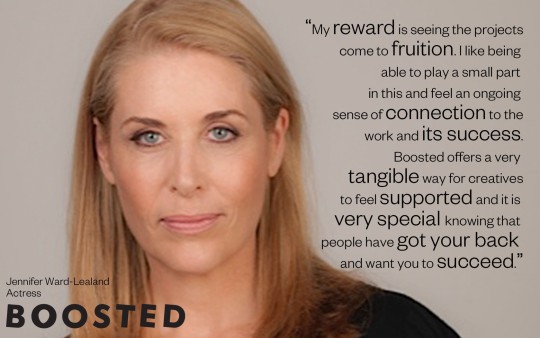
Rewards-based crowdfunding is an exchange with the projects owners’ crowd. The backers are purchasing an experience or item which the project owner delivers. For a more in-depth look at rewards, check out this blog.
What does it cost?
Standard costs
These vary between platforms. Boosted charges a 10% flat fee on total funds raised of each successful project. There are no hidden costs. A funding target of $1,000 will cost $100. If the same project exceeded their target and raised $2,000, they will have a fee of $200. Boosted has no transaction or credit card fees.
Rewards-based platforms charge a fee of around 5%, plus 2.8%–3.4% on transactions, and 30c per credit card transaction. In addition, there are the costs of the rewards and the shipping. For an excellent breakdown of these costs see Marion Call’s blog.
An often unanticipated cost is ‘failed transaction’ costs. Most sites process credit card payments after the project has closed. By this time the credit card could have reached its credit limit or been cancelled.
Boosted processes the card at the time of donation, meaning all the money shown on the project has already been gathered, which also means Boosted doesn’t have to hold people’s credit card details.
Often overlooked costs
If a Boosted project is GST registered, they can add the GST to their invoice to us. Boosted, as a charity, is able to grant 15% on top of the funds raised. A $1,000 project will invoice Boosted for $900 (total funds raised minus the 10% fee), and if they are GST registered they add 15% and receive $1,035.
Donations to Boosted qualify for a 33% tax credit from IRD, so a $100 donation will qualify to get $33 back at the end of the personal tax year. Read more about that here.
Most platforms process the cards after the project closes. As some of the credit/debit cards will fail, remember to factor this in to your budgets. Boosted processes at the time of the transaction so this is not an issue.
Rewards-based projects must also consider time, packaging and posting, and the expense for rewards. That might be 100 hand-printed tee-shirts, illustrated postcards, inclusion of special characters in the writing, artist meet-and-greets, etc. These things take time, effort and money that don’t necessarily add to the art; in fact, it can detract from it.
Boosted has no obligation to send rewards. You can, however, thank your donors with unexpected gifts. Read more about that here.
So, how much does it actually cost?
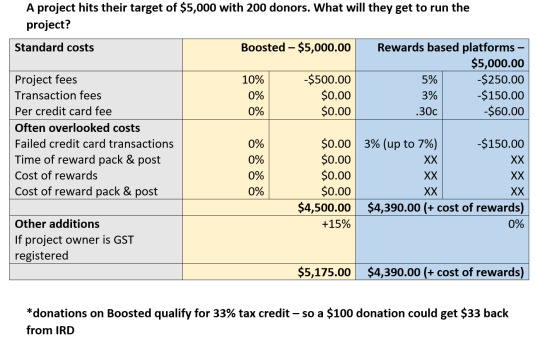
Hidden costs add up and what might initially look cheaper, sometimes isn’t.
Often overlooked benefits
There are also other benefits of different websites to consider.
What support and resources does the website provide?
Does the site have an established audience that matches your target audience?
How usable is the site? Will your crowd be able to donate to your project easily?
How likely is it that a project will be successful on the site? This is known as the success rate of the site.
Boosted is highly invested in upskilling project owners and arts fundraisers. We offer one-on-one coaching, which greatly contributes to our 77% success rate. The national standard is 55% and the international standard is 45%.
Here at Boosted we are real people. Project owners AND donors can call us on the 0800 200 7833, or ask questions over email. We provide real advice based on the latest insights and data - from both global and New Zealand stats.
If you are not keen on personal coaching, we also run a blog, Boosted School of Crowdfunding, where you’ll find a stockpile of knowledge for free, for anyone and everyone to use.
So what to do?
As you can see, there are so many things to consider. Make sure you do your cost-benefit analysis before choosing a crowdfunding website so that you’re not hit at the end with unseen costs or obligations. Happy crowdfunding!
This blog was written by Anna Jackson-Scott, Marketing Assistant at Boosted and the Arts Foundation.
0 notes
Text
What do I do when I exceed my target?

It’s testament to Kiwi generosity that 75% of successful Boosted projects exceed their target. Some common questions we get asked are: “Should I aim to exceed my target?” “Am I even allowed to?” “What do I do if I exceed?” “What are the financial implications if I exceed my target?” We’ll answer all these questions and more in this blog.
Should I aim to exceed my target?
Yes! Boosted is an all or nothing platform so you need to reach your target or the donations will be returned to donors. We work closely with you to assess your network, your campaign strategy, and how much time you have, to determine how much you could realistically raise. It is about balancing what you need to realise the project with what your network can afford to give.
You can choose to play it safe and make sure you can hit the target strongly and early, or you can opt to play the long game which increases excitement but may leave you biting your nails.
Am I allowed to exceed my target?
Of course you are! Your success is our success and the more money you raise, the better your project is likely to be. The only requirement is that all money raised goes towards your project. You couldn’t, for example, raise $4,000 from a $2,000 target and think, “Well I can use that extra $2,000 for a trip to Fiji!” Unless going to Fiji is part of your art project, of course.
The most a project has raised over their target is 447%. That’s The Impeccable Larry Woods, who raised $8,957 of a $2,000 target. Not bad. They were clear that they would use the extra money to promote the film once it was made, to get it out to a wider audience.
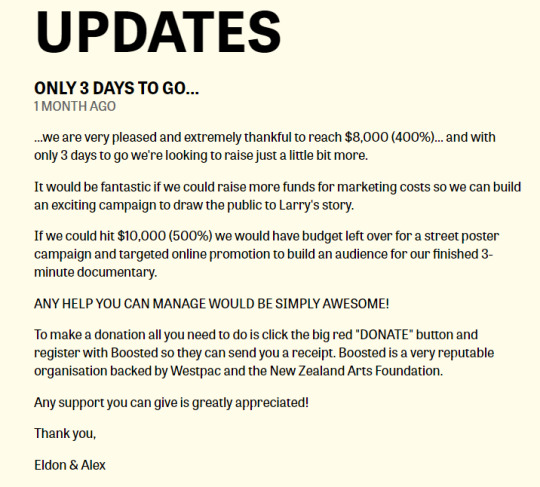
To make sure the extra funds you’re raising are going towards your art and not your decadent holidays, the team at Boosted will give you a call to congratulate you, and to discuss what you’ll use any extra funds for should you get them. Perhaps they’ll buy you another few days of filming, or a better camera than you thought you could afford. If that’s the case, great! Just be clear that any extra money is still dedicated to making your art happen.
What do I do if I exceed my target?
Celebrate! When you hit 100%, it’s a great opportunity to do some serious celebrating with your donors. It’s also a good time to change your tack to keep that momentum. Here’s how:
1) Write a social media announcement of your success, thanking your donors profusely. Let them know how the project is going and put the word out that you’re still looking for donations to further support your project. Let them know how any extra funds will be spent.
2) Use the UPDATE function within your Boosted profile – this goes out to all of your donors who have chosen to share their email addresses with you. All new donors coming to your page will also see it.
3) Change the tone of all your future comms. You’re grateful to have hit your target, and you’d also appreciate more support to better achieve your goals (be clear on what these goals are).
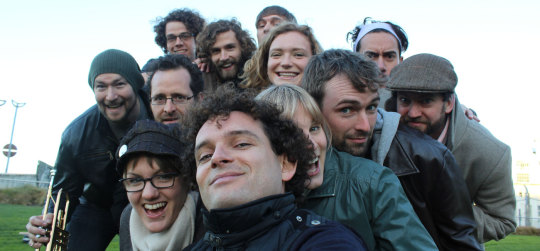
The Playground NZ team ‘thank you’ image sent to their donors after hitting 100%.
Each element should celebrate and thank your donors for getting you to 100%. It should then let them and future donors know what the extra money will be used for. You can also set a new, unofficial target (See the excerpts below). It’s another fantastic way to harness momentum to gather further funds.
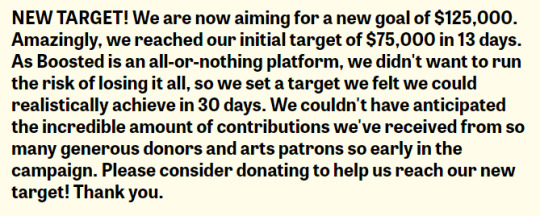
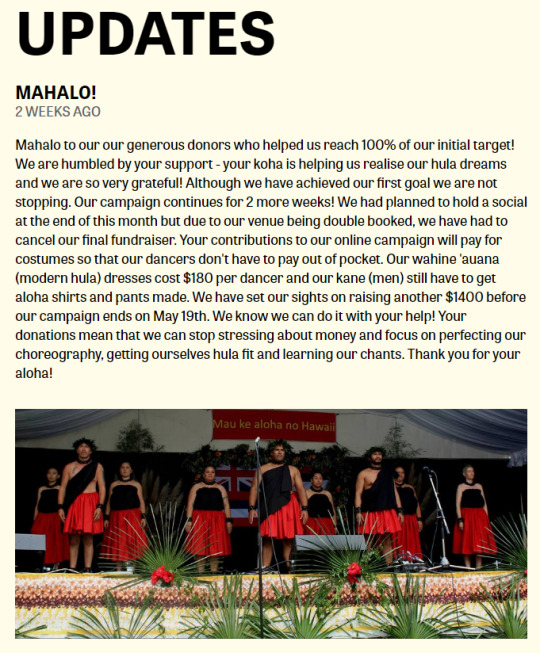
What are the financial implications?
Boosted charges a flat 10% fee on total funds raised, not on the original target. So if a funding target of $1,000 raises $2,000, the fee is $200. However, that money goes straight back into the arts. Our fees go back into the running of our platform to help more New Zealand artists achieve their dreams.
Go on, get crowdfunding!
Boosted is an all or nothing site, so you need to hit your target to get the money. What’s the take away message? Set an achievable target and then fundraise your butt off to not only meet the target, but to exceed it. The more you raise, the more you get.
This blog was written by Anna Jackson-Scott, (former) Marketing Assistant at Boosted and the Arts Foundation.
Updated January 2019.
0 notes
Text
What is a Match Donor?

When crowdfunding your project on Boosted, a Match Donor can be a great way to increase your goal, and help you to hit your target faster. They give your project momentum, and increase the confidence of your supporters.
But what is a Match Donor? In this post we’ll tell you what they are, what they’re good for, why it’s a good idea to be a match donor, and how to go about getting one of your very own.
Projects should always arrange the match donor before the project goes live. It boosts morale and lightens the fundraising load from the very start, because it looks like there’s less to raise (but really you just get more money).
So what exactly is a Match Donor?
Simply put, a Match Donor is a person, group, or organisation who agrees to match your crowd’s contributions up to a predetermined amount. Your ‘match donor’ gives you the money to allocate to the campaign, on the basis that your crowd can match that amount. It effectively doubles your donations (up to the match amount).
For example, The New Zealand Portrait Gallery commissioned Heather Main to paint Celia Lashlie’s portrait. The Gallery needed to raise $8,800, of which The Celia Lashlie Projects organisation donated half. The Gallery went out to their crowd to raise the other $4,400. When one of their crowd donated $10 it was matched by the Match Donor’s money, making it $20. The donors saw their donations doubling and the project rushed towards the target at twice the speed it normally would.

Easy, eh?
Why have a match donor?
A match donor has many useful functions, number one being that a whopping 98% of projects with a Match Donor have been successful.
Let’s break some of the other benefits down.
1. Financially, it can help double your money
2. It boosts your donors’ morale and willingness to donate by doubling their donation and doubling the speed the project grows at
3. It can help vouch for you if you’re a new group without a proven track record. If you’re a new filmmaker matched by the New Zealand Film Commission or a high profile corporate, donors will have more faith in you even if they don’t know your work
4. A match donor can act as an influencer and, if they have a strong brand association, can raise your project’s profile and credibility
5. ‘Matching’ can enable a private (anonymous) patron to support their favourite artist (with the added bonus of getting a 33% tax credit)
6. Being a match donor can boost your brand’s publicity and social kudos.
For example, the inaugural Arrowtown Spring Arts Festival received backing from Millbrook Resort, Queenstown. The Arts Festival organisation was three months old with lots of local support, but no event history. The corporate match donor brand – the resort – reassured donors that the festival was well supported and a high quality brand. It added a sense of security for donors.
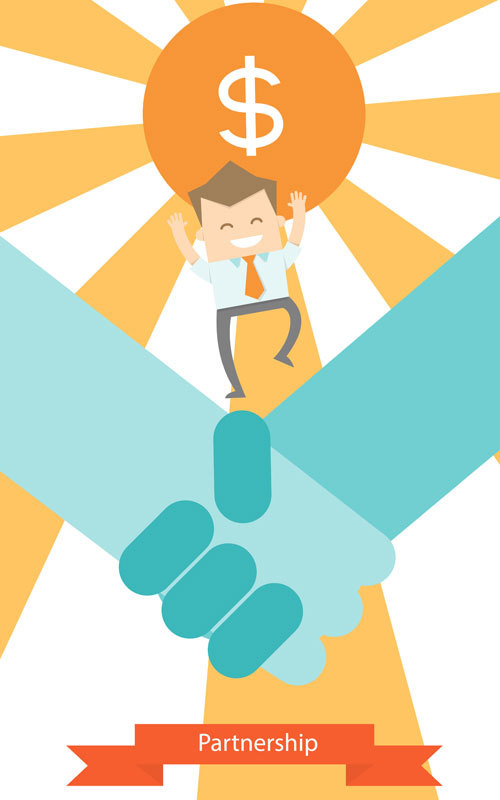
Festival goers then used Millbrook Resort and, as a result, the resort gained new patrons. So it’s really a two-way, mutually beneficial street.
So why be a Match Donor?
Becoming a Match Donor for a project not only benefits the artist, it can benefit your brand. Many brands are looking to increase their kudos through aligning with socially positive causes. Supporting others’ endeavours can do just that. Plus every time someone donates, they’re exposed to your brand. That’s more eyes on you and in a network you might not be able to talk to on your own.
Les Mills became a Match Donor for the documentary short Wilbur Force as part of Loading Docs film festival. It was a good brand alignment – a gym supporting a film about a young wrestler getting back into shape and back in the game. Associating themselves with a social initiative like Loading Docs, and a cause like film making, boosted Les Mills’ image and social currency, and in turn helped the film succeed with funding and publicity. Win-win.
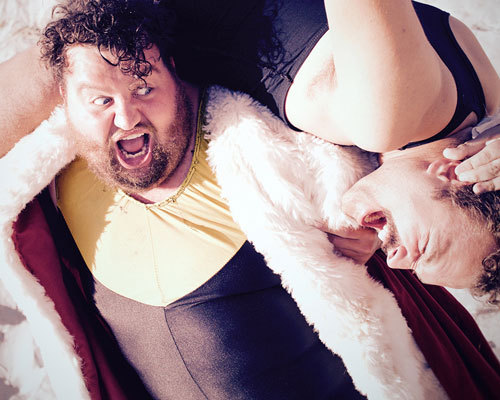
Wilbur Force
However, some Match Donors may opt to be anonymous. They may be a private patron wishing to support an artist but wanting to avoid the public eye. Match donors may also conceal the amount they’re donating.

How do I get a match donor?
As with Les Mills and Wilbur Force, corporate match donors are almost always aligned with your cause. That’s what motivates them to get involved. It could be as general as a regional association, or as specific as a social cause.
Sometimes, relevant organisations or supporters will contact you with an offer. For example, illustrator Sarah Maxey was approached by a long-time supporter of her work who then became her match donor.
However, the most common way to secure a match donor is to ask!
Who do you ask?
1. Identify organisations or people whose values, aims, or causes align with your project.
2. Put together a pitch explaining your project
3. Highlight how your sponsor can benefit from becoming a match donor. This could be anything from gaining customers through your project to seeing their name or brand as a sponsor on your project page. Or, maybe you’ll organise a VIP package for them.
4. Decide what your ask is: do you want to specify the dollar amount or will they decide that?
5. Make contact - email, call, or meet them, and deliver the pitch.
6. Follow up after they’ve had some thinking space.
7. If they say no, find another potential Match Donor and repeat the process.
Also, if you know a large sum of money is about to come in, it can be a great opportunity to ask that donor if you can “convert” their donation into a Match donation. That way, you can take one donation and use it to create momentum throughout your audience, inspiring them to donate as well.
So keep an eye out for opportunities. Some people take a very structured approach, and some make social connections that turn into sponsorship opportunities. Maybe you’ll meet the CEO of Les Mills at a party and you’ll get chatting about your short film, Wilbur Force, and that’s how the Match Donor will come about. Or perhaps you’ll take a very formal line through email. It doesn’t matter how you approach – the important part is that you do it!
This blog was written by Anna Jackson-Scott, (former) Marketing Assistant at Boosted and the Arts Foundation.
0 notes
Text
Why does Boosted have such a high success rate?
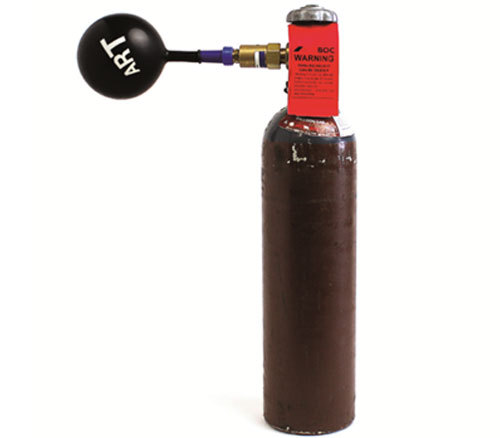
Boosted has one of the highest success rates globally at 76% since inception. The global industry standard is 44%. Our 2015 success rate was 82%.
In April 2016, Boosted celebrated a milestone: $2 million donated to the New Zealand arts economy. It’s a huge achievement, and with such a large success rate, it leads us to the question: what makes Boosted so damn good?

Who is Boosted and how does it work?
Boosted is New Zealand’s only donation-based crowdfunding platform dedicated to arts and creative projects. Boosted is aligned with the Arts Foundation of New Zealand, and so benefits from the knowledge and expertise the Foundation has gained in its fourteen years since inception. We understand the arts funding environment well, and what we really care about is creating a strong arts and creative economy, and we want to share that knowledge with everyone, so that any creative project can be realised and succeed.
It’s all for you
Boosted is a charity. Boosted donations qualify for a 33% tax credit, and what we receive from you goes straight back to the arts. We don’t drive flash cars or drink crates of champagne. Our fees go directly back into the artists and the running of our platform to enable New Zealand artists to generate more creativity and make more art happen. We focus on strengthening our artist network to support a thriving arts world, and creating informative resources for artists (like our blog, Boosted School of Crowdfunding) that are open source and easy to use. We want to maximise our artists’ knowledge, reach, capability and ultimate success.
Boosted charges a flat fee of 10%. There are no hidden costs such as transaction fees, failed transaction fees, or GST. You can claim back your 33% tax credit. Because of this, Boosted often works out cheaper than other crowdfunding sites because of other sites’ hidden donor costs i.e. the transaction fees and and GST. Make sure you check the T&C's carefully and understand these possible charges. We will tackle this topic in a coming blog, "How much does crowdfunding actually cost?".
What do we offer our projects that other platforms don’t?
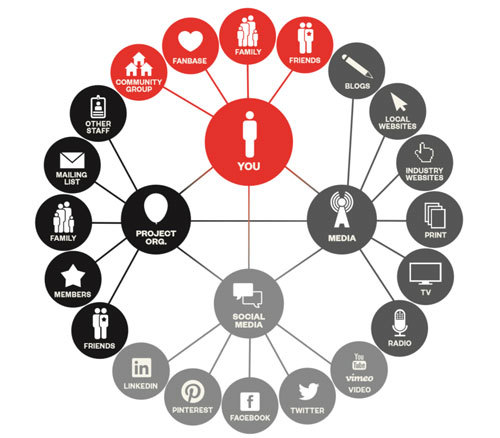
Every Boosted project receives one-on-one coaching if they want it. Our Project Manager Kate Ricketts or one of our ambassadors, takes you and your team through an extensive planning and execution process. All of our ambassadors are art makers themselves, and all of them have run their own crowdfunding campaign. They know the process, so you’re in good hands.
They’ll help you map your network, draft a story that will capture your donors’ hearts and minds, create a realistic fundraising goal based on your network numbers, and develop a campaign strategy - your plan of attack for how you’re going to create and maintain momentum towards your goal.
The benefit here is that we won’t sugar-coat the process. You’ll come out with an achievable goal based on industry experience and hard data. If you hit a slump or lose momentum or motivation, we’re just a phone call away to let you know that this is normal, and what to do to stay on track.
To reward or not to reward?
Boosted is a donation-based site, rather than a rewards-based one. That means our artists are not obliged to offer gifts in exchange for donations. They can give non-material gifts as thank you presents, but that is optional. Reason being, Boosted is a charity, which means most donations receive a 33% tax credit. Rewards-based sites do not qualify for charitable status. Secondly, we think it is distracting for the artist. They are fundraising to make art, not gifts. If you support them, you are supporting their art, not giving to get something in return. If the artist is obligated to spend half the money they raised on rewards, it takes away both time and money from the art-making. It defeats the purpose. Boosted donors are motivated to give because they love seeing artists thrive, not because they want to get something in return.
Donation-based crowd-funding also fosters a much deeper artist-donor relationship, one that is far more long term than a short term exchange of gifts. Our artists build their audiences through crowdfunding and as a result, the artist-donor relationship becomes a lot more meaningful – donors are genuinely invested in the artist and their work. Many artists will invite their donors to events, openings, screenings, talks, performances, rehearsals and more, and this more intimate exchange is what we believe the artist-donor relationship should be, rather than a one-off reward exchange. It continues beyond a crowdfunding campaign. Boosted donors value access to the artist and an ongoing relationship, not a ‘thing’ in exchange. Our success rate is testimony to the dedication of these arts donors to their chosen projects. They want to see the artist succeed and they rally behind them to make it happen – gift or no gift.
Some data
We know our stuff. We’ve put together data on successful projects as a benchmark, so you can see how other projects succeed. After that, it’s down to hard work and dedication by us, and by you. We’re in if you are.
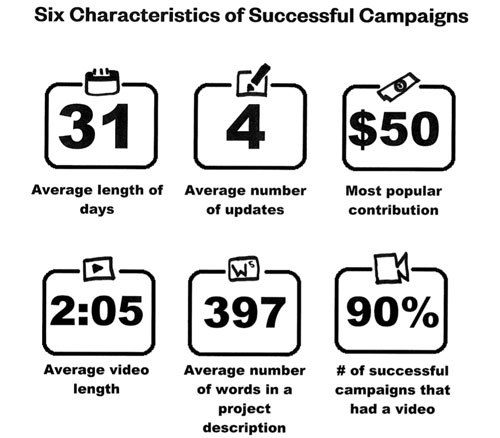
What are people saying?
Don’t take it from us – take it from our artists. They’ve worked with us and know what we offer. A running trend is that crowdfunding really goes beyond the dollar amount. It’s about engaging an audience and garnering support for the project – not just monetarily, but also ideologically, logistically, and with tons of momentum!
James Wasmer, Manager at Auckland dance company Black Grace, ran a Boosted campaign in 2015 to raise money to tour their 20th anniversary show, 20 for 20, around New Zealand. “The crowdfunding experience has been rewarding not only financially but also through the opportunity to engage with, and receive feedback from, donors. The advice and support received by the Boosted team has been invaluable throughout this process,” James said.
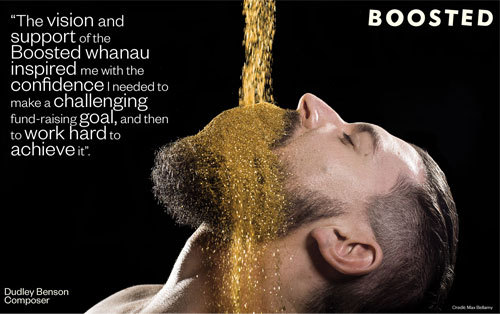
Dunedin-based composer and performer Dudley Benson also fundraised with Boosted. He raised over $13,000 for his third album, Zealandia. Crowdfunding can be challenging, and here at Boosted we work hard to support artists to feel confident about their fundraising approach. Dudley says “Working with the Boosted whanau was a hugely strengthening experience. The vision and support of the team inspired me with the confidence I needed to make a challenging fund-raising goal, and then to work hard to achieve it. To then transition back from being a fund-raiser for a month, into an artist again, was really interesting - I'd had an injection of confidence and new energy that helped me push on with making my album”.
Royal New Zealand Ballet Philanthropy Manager Liesl Nunns likewise found that crowdfunding was a whole lot more than just getting dosh. “Our experience was that the value of crowdfunding could go beyond a dollar amount. It was a platform for really saying something about the organisation, and for asking the public to become involved with what we stand for. The whole organisation needs to be invested in it: the ‘crowd’ in crowdfunding needs to be internal as well as external”.
Way to rally the troops!
Who are these donors?
Our donors are arts supporters at their core. As mentioned, our donors give out of love and a passion to see the arts project go forward. We’ve found this fosters a better relationship than the ol’ give and go. Our donors are invested in the projects and artists they donate to, and they want to keep that relationship with the artists alive even after the campaign, and see the project completed.

Actress Jennifer Ward-Lealand has donated to many projects on Boosted, and we asked her what inspires her to do it.
She said, “My reward is seeing the projects come to fruition. I like being able to play a small part in this and feel an ongoing sense of connection to the work and its success. Boosted offers a very tangible way for creatives to feel supported and it is very special knowing that people have got your back and want you to succeed”.
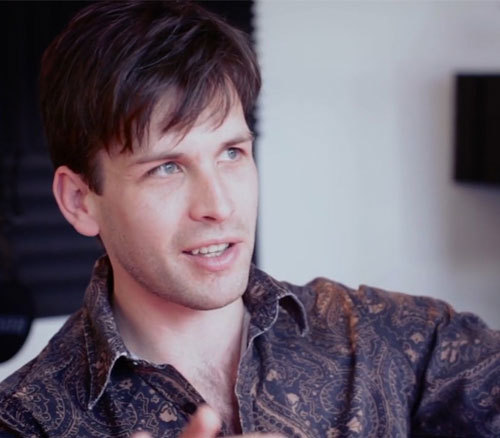
Composer Tane Upjohn-Beatson has also donated to multiple projects. “So many great projects don't get realised due to funding woes. I donate to these projects to make sure they get made and don't fly under the radar. It's a way for me to support projects I believe in and want to see thrive. Each one of these projects makes NZ creative landscape colourful and alive,” he says. “It gives power to individuals to choose what they want to see being created,” he adds. In many ways, crowdfunding democratises the funding process.
Adrianne Roberts, Director at Show Pony, says, “I love being part of the process of making great work happen. It's a reward enough for me to be close to the creators and to see their hard work pay off. You can't beat the feeling you get when you see the finished product of what you supported and know you’ve had a direct effect.”
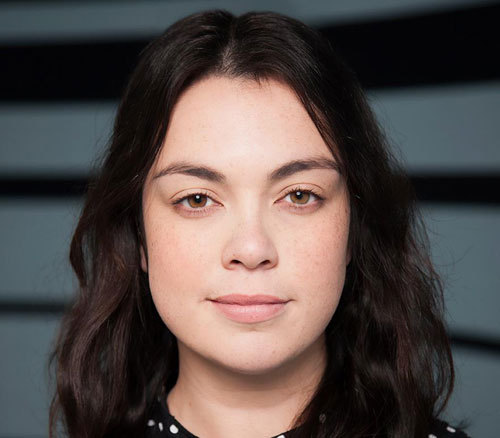
So there you have it! There are many reasons Boosted has such a high success rate compared with other platforms, from the extensive support the Boosted team gives their artists, to the supportive donor mentality, to the data that teaches artists how to (statistically) succeed. If you need still more convincing, give us a call on 0800 200 7833 and find out for yourself!
This blog was written by Anna Jackson-Scott, Marketing Assistant at Boosted and the Arts Foundation.
1 note
·
View note
Text
7 Ways to Engage your Network

Anna Dean has been running her own publicity, PR and events business for the past five years, working largely in the arts and cultural sector, as well as the film industry.
She attended the exclusive Pixel Lab workshop in mid 2015, held in Inverness, Scotland, with 30 people from around the world to learn more about cross-platform audience engagement in the digital age. She received a Professional Development Grant from the New Zealand Film Commission to attend and ran a Boosted campaign to cover the difference. In doing so she broke the record for the fastest crowdfunding campaign ever, reaching her target in just 26 hours.
How did she manage it though? "It only took two Facebook posts," she says, "but those two posts were essentially the accumulation of over ten years of networking and dedicated work on other people’s projects."
We asked Anna for her top tips on engaging your network.
1) Know you are completely and utterly ready to put yourself out there. You must KNOW you have a cool idea people will be willing to support and help make possible with their hard earned cash.
This is rather self-explanatory and the Boosted team are there to assist. The Boosted platform will accept any arts related project that has a benefit to New Zealanders so make sure you’ve chosen the right platform for your project to begin with. You’re going to need to make a lot of noise which takes a lot of effort so there can be no doubt that you’re ready and committed.
2) Have the right platforms for you/your brand.
To attempt to undertake a crowdfunding campaign I strongly suggest having your social media platforms set up well in advance. You need to be actively involved with and foster an engaged audience. If you think about it in real life terms, you wouldn't randomly turn up at a friend’s house and ask for $50 so how can you expect to start hammering your social networks out of the blue.
3) Be active on your chosen channels.
See above. But also make sure you are on the right channels and speaking to your network in the right way. E.g. Facebook is for friends. Twitter is for the people you would like to be friends with and Instagram, for example, is how you attract the people you would like as friends. Or something like that. I find boxing such things in never works for long.
4) Front up, be honest, create a campaign for Boosted that reflects you or your project, and always make a cool video.
Video content is really king these days and while it may be rather alarming to have your face and self “out there”, how else is a stranger going to know who you are and be moved to support you? Video is key. Let me say it again. Video is key.
5) Make it human, make it real, make it like a party everyone else wants to be at.
As well as your online activity, you need to get the message out with the wider network and have real world print coverage guaranteed to reach the general public. There is a danger in targeting your direct network and the message needs to be accessible to those who support Boosted projects as well as to a wider audience. Spread the net as wide as you can.
6) Become a professional network hustler – caring is sharing.
One of the best ways to receive support on your project is to support other people’s projects. “You get out what you put in” should always be in the back of your mind. Even $10 can really help someone, the cost of a coffee and muffin.
Also, the main way I see Boosted success happening is when people push beyond their own social network. Forward a particularly interesting project to your aunt or your teacher, or someone you know it will appeal to. Be actively engaged in other Boosted projects and share them if they strike a chord.
7) Being nice is cool.
Support other people. Give them feedback. Tell people when you've seen something you really like. I often contact people if I’ve heard an interview that really resonated. Or make the point of recognising something that has improved. I'm a huge one for giving positive feedback when it's justified. Then it doesn't become empty praise and I can really mean it. People often end up pushing their own projects on their social platforms but it's great for existing networks to be leveraged by other people. Share space in your e-newsletter, post about a friend’s project… in short, help each other out.
0 notes
Text
Give to the Arts and tax is your friend
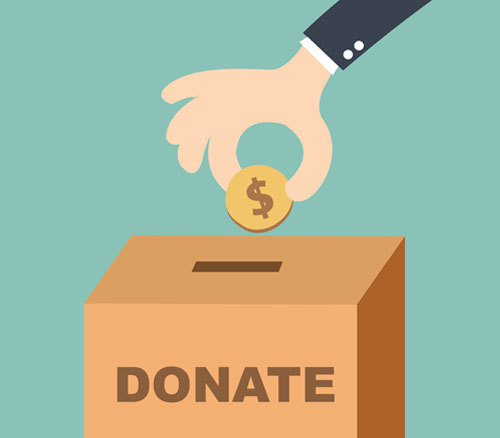
Understanding tax law and how it applies to donations to the arts is important for anyone planning to give to the arts.
The Inland Revenue Department released a discussion document in March 2016 providing examples of when a gift is a gift and when it is not. This is a complex subject, so you can forgive charitable organisations if they find the dos and don’ts confusing. However, when you understand the principles of charitable giving it is not hard to know what to do.
The Arts Foundation has been making it easy for people to give to the arts since it launched in 2000. In 2013 the Foundation launched Boosted, a unique crowdfunding website where all donations qualify for a tax credit.
What is a tax credit and why is this important to the arts?
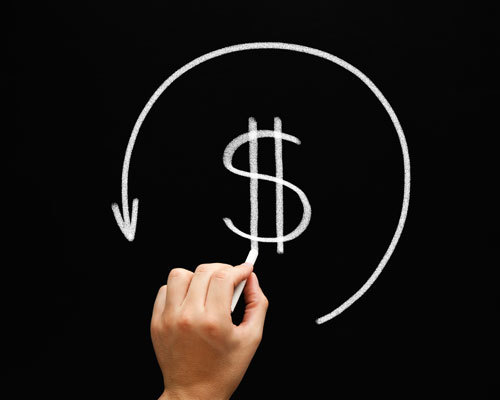
When a donor gives money to a non-profit organisation with donee status, and their donation is given freely with no expectation of anything in return, most of the time they qualify for a tax credit.
A tax credit is a set rate of 33% of the donation. For example, if a donor gives $100 then the donation qualifies for a tax credit of $33 dollars. The donor needs to claim the $33 credit from IRD and will usually do this along with any other donations they have made in a tax year. The amount donors can claim is limited to their annual income after tax.
Donations to arts organisations with donee status qualify for a tax credit. New Zealand is one of the most generous nations in the world when it comes to charitable giving. Many donors assume that they can claim a tax credit when making a donation, so it is important that arts organisations provide donors with legitimate donation environments that qualify for tax credits.
When is a gift a gift?
The IRD says that in order to qualify for a tax credit, a gift must be voluntarily given with no material advantage being received by the giver. The gift also does not qualify for a tax credit if it is being made under contract or obligation.
What can I give my donors?
You can more or less give your donors what you like as long as they don't expect anything in return for their donation. For example, you can give donors free tickets to an opening night to say thanks, but the donors must be surprised with the offer.
IRD’s discussion document outlines some things that can be offered to a donor in advance of them deciding to make a donation. They include:
Acknowledgement. It is okay to tell donors that they will be listed in the credits of a film or on a website or honours board;
It is okay to promise items of no material benefit in return for a donation. The IRD uses an example of a person making a $50 donation and getting a plastic key ring;
It is alright for a donor to specify a project to direct their donation to. This is why the Arts Foundation can direct donations to Boosted projects.
What should I avoid?
To be sure that donations qualify for a tax credit projects are unable to offer material benefits. Examples are tickets to shows or CDs. Donors also do not qualify for a tax credit if they have a written or spoken contract related to their donation. For example, a film maker cannot agree to give an acting part to a donor in a film in return for a donation.
In most cases, any person getting a material benefit from a project – such as being employed by that project – will not qualify for a tax credit if they donate to the project.
The IRD says that arts organisations cannot split a gift and a purchase made by a donor if the gift is a condition of the purchase. For example, it is not possible to make entry to a dinner dependent on a ticket purchase with a portion of the ticket price being a donation. The donation portion would not qualify for a tax credit. However, the IRD says that people that purchase a ticket to a dinner and then also choose to make a donation can claim a tax credit on the donation portion of the transaction.
In their paper, the IRD gives an example of a person that purchases two tickets at their usual price of $50 each and then chooses to make a donation of $100, making the total transaction $200. In this case the $100 donation does qualify for a tax credit.
Who is responsible?
Donors are ultimately responsible when claiming a tax credit and if they have any doubts they should seek their own independent advice. To ensure donors' expectations are met, arts organisations should take care in the way they promote the opportunity to donate and should also get their own independent advice if they are concerned.
Something to be proud of…

The principle of giving is simple: to claim a tax credit, a donor must give freely with no expectation of any material benefit. We at the Arts Foundation think this is a beautiful idea and it is something celebrated by the Arts Foundation and Boosted. New Zealanders are generous and they care about the arts. The fact that thousands of people have given freely to the arts on Boosted is something the whole nation can be proud of.

This blog was written by Simon Bowden, Executive Director of the Arts Foundation. To read more about Simon, visit our website.
0 notes
Text
FIVE TOP TIPS BEFORE YOU LAUNCH A CAMPAIGN

Image: Erin Forsyth
The Boosted team has put together five top tips to consider before launching into the crowdfunding sphere. Listen up…
Careful planning and execution is essential for successfully crowdfunding a project. These five tips will help prepare you and get you thinking along the right lines about what it takes to succeed on your campaign.
1. Talk, Talk, Talk!
Before you launch yourself on your epic crowdfunding adventure, talk to people who have done it before: the people who work at the crowdfunding platform! At Boosted we offer one on one support and you can contact us by phone or email. We’re happy to answer any questions you have, and can help you prepare and then support you as much as we can, through your campaign.
You should also talk to artists and arts organisations who have run crowdfunding projects before.

2. Dig Deep and Be Honest with Yourself
Why are you REALLY running a crowdfunding campaign? List ten good reasons which will help keep you focussed throughout the campaign.
What are you going to achieve with those funds? Beyond the actual project. Where will it lead to – immediately, and longer term?
Is this something your crowd are likely to care about? Put yourself in their shoes and consider what their emotional hooks are. Some will have very personal reasons and want to support you because they care about you and your career. Some
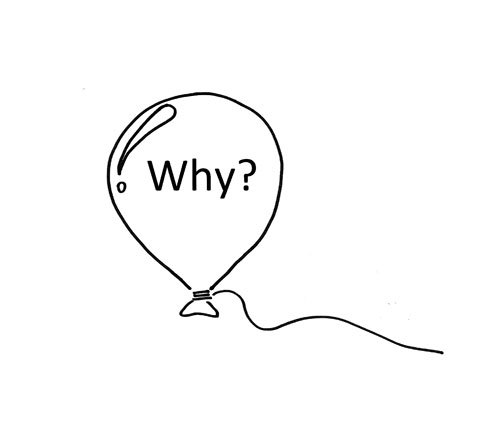
will be art lovers who like your project outcomes. Some will be your arts peers and some will support you because you live locally. Most donors will fall into two or more of these categories.
Once you feel confident about your aims and reasons, make sure it’s clearly communicated on your Boosted project page, in your social media, in your emails and when you talk about the project. See our post on storytelling here.
3. Front loading your Campaign
Most successful campaigns get off to a strong start (10% on the first day and 30% in the first week) because they use their existing networks. In the process they inspire and create ambassadors who will share their story. Therefore…
Use your existing networks. Email friends, family, colleagues, business partners, your old school, your postman. Tell your story to everyone you know to and ask them if they will back you on the first day. Harness the power of social media and remember to talk to people one-on-one. See our blog post on how to use Facebook for your campaign here, and on how to gather your network, here.

4. Keep the $$$ Real
Be realistic with your financial target. Crowdfund what you actually need, especially on an all-or-nothing site. Projects often raise more than their target, but you won’t raise anything if you don’t meet your target in the first place. It is heart-breaking to put in all that hard work, only to fall short completely.
5. “Never, Never, Never Give Up” - Winston Churchill
Don’t underestimate the power of jeopardy. Plenty of projects have sprinted across the finish line in the last 24 hours. It is nail biting and ideally you will get to 100% long before that, but it can trickle slowly in, right up until end. You never know who is waiting in the wings, watching closely and wanting to sweep you over the line.
Read this Q&A with Gemma Gracewood to hear an artist’s experience of crowdfunding, and how she prepared for her campaigns.

Drawings by Kate Ricketts, Project Manager and Digital Producer at Boosted. To read more about Kate, visit our website.
#boosted#crowdfunding#artsfoundation#arts#fundraising#marketing#tools#network#social media#boostedtoolkits1#boostedtoolkits2#boostedtoolkits3#boostedtoolkits4#getboostedintro
1 note
·
View note
Text
HOW TO USE FACEBOOK FOR YOUR CROWDFUNDING CAMPAIGN
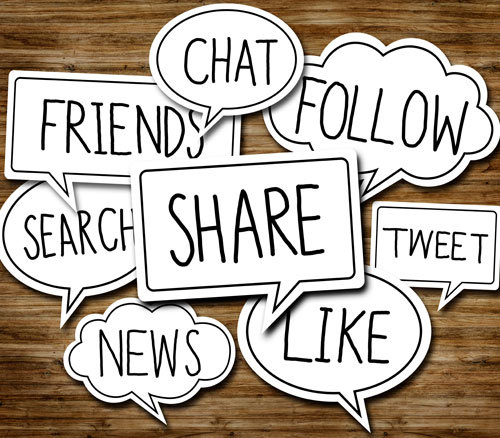
Social media is an essential tool for your crowdfunding campaign. Here’s how to get the most out of Facebook and create a buzz for your project…
Getting the most out of your social media can be the make or break of a successful crowdfunding campaign. Facebook is a great tool to connect to your audience, keep them updated on what you’re doing, spread the word about your campaign, and grow your fan base.
1. Build your network first!
If possible, start building a following for your group/organisation/artist project before your campaign goes live. These will be your fans, your supporters, and your potential donors in the future. Post images, updates, media coverage, photos of performances…anything that will help to engage people and get your name or project out there! Exposure is key, and the larger your engaged network is before your project goes live, the easier it will be to get lots of donations! Dudley Benson ran a successful campaign in 2015, and he was a master of social media audience engagement, building an excellent following even before his project went live with images, updates, and performance information, like here:
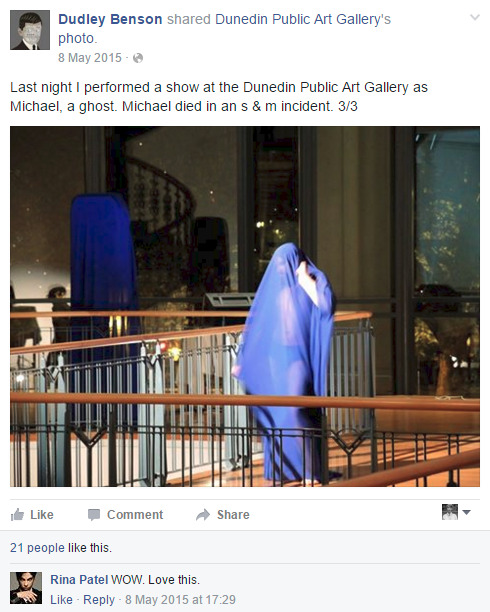
2. Use the right Facebook account!
There are many types of Facebook pages – personal accounts, artist pages, organisation pages etc etc…which one you use will depend on whether you’re an individual, organisation or group of collaborators running this Boosted campaign! You will reach most people (aka potential donors) if you utilise your established networks. Never set up a Facebook page or event solely for your Boosted project. You will only divide and dilute your followers. If you are an individual who usually posts about your art, work and interests on your personal page, use your personal page to share your Boosted page, campaign updates and anything fun that’s relevant to your campaign. If you are an organisation, make the most of people who are already interested and following you and post about your Boosted project there! If you are a group of collaborators, have an agreement that you will share, like, comment on etc each other’s Boosted-related posts and the Boosted campaign page. The amount of people you will reach between you will be immense!
Always, always, always include a link to your Boosted URL. You want to be sending people there all the time. The more you can get the word out there, the better!
3. Post regularly
Keep your audience well updated, but don’t annoy them. Post twice per day at the most, or three times if something really exciting happens. Once mid-morning and once mid-afternoon should do it. Don’t be afraid to repeat yourself or reuse content – your audience needs three reminders before they’ll donate to your project, so give them reminders! Dudley was also great at re-posting content to make sure it reached the maximum number of people:
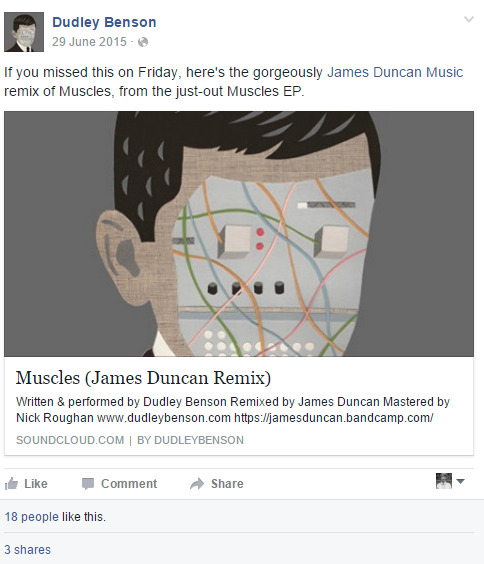
4. Use visuals
Always accompany your posts with an image, a video, or a gif. Your audience will stop to look at eye-catching content first, and read your message second. The key is to grab them with interesting visuals so that they get interested, stop scrolling, and then read your words.
5. Link to your donate page
Each time you post information on your project, link back to your ‘donate’ page. Whether you’ve posted an update on your campaign progress, what you’re doing on the project, or a picture of a cast or crew member, or your cat in a funny hat, let your audience know where they can find out more and donate to your project. Make it really easy for them to donate.

6. Know your audience
The tone you write your posts in should be friendly, informative, and enthusiastic. The aim is to excite your audience and show them what they’re involved in by donating. Your tone also needs to speak to your audience’s demographic. If you’re aiming at a sincere audience, use a sincere tone. If you want to gather a young, exuberant, or eccentric crowd, your posts should cater to them. If in doubt, stick to friendly, informative, and excited about your work, and your audience will get excited too.
7. Tag people
Tag @people in your posts where appropriate. The more you can reference and connect with others, the more eyes will see your post. Try tagging cast or crew members, companies, and places to spread the message far and wide. NB: Due to overt spamming in the past, Facebook won’t allow organisations to tag individuals through their personal pages. However, you can tag other organisations or events. So, utilise tags wherever possible:
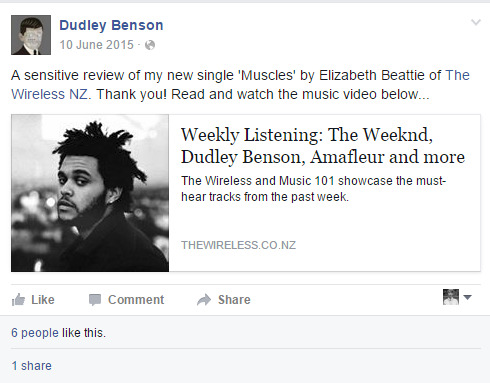
8. Use hashtags
Hashtags can increase the reach of your posts and start conversations. However, if you do use hashtags, keep it to one or two per post. If there are too many, the post becomes hard to read and annoying, or people feel spammed. Use a couple of really good relevant ones and leave it at that. i.e. #nzarts #nzmusic #nztheatre. That said, if you think up a funny one, use it!
9. Link your Facebook to other social media
To spend more time on your project, and less time on social media, link your Facebook with other sites i.e. Twitter and Instagram. That way you kill many birds with one stone, and reach more people on multiple platforms in one go.
10. Keep in touch
Continue to post even after your project has finished. It’s part of your legacy now, and keeping in touch with, and thanking, your audience, will help to keep them informed and aware of your project, which paves the way for any future projects you may run. Dudley thanked his donors in almost every post:
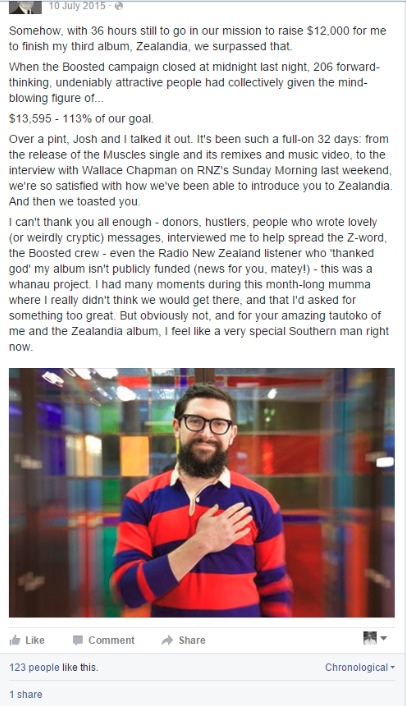
Lastly, have fun with your posts! If you’re having a blast with your project and showing your audience all the exciting things you’re doing, it’ll really show through your posts and images, and your audience will catch the vibe too!
This blog was written by Anna Jackson-Scott, Marketing Assistant, and Anna Edgington, Marketing Coordinator, at Boosted and the Arts Foundation.
0 notes
Text
Saying Thank You
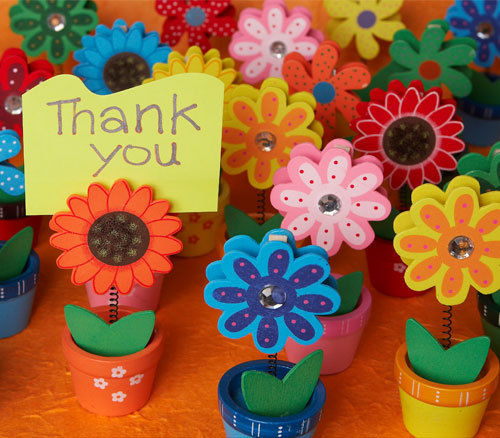
Want to really connect with your donors? Here’s some really handy advice...
Finding a way to say thank you to your supporters is an important part of running your crowdfunding campaign. It’s about being immediately responsive, or it may be the first interaction you have with a new group of supporters, and the beginning of a relationship that may take you to places you never imagined.
Thanking people is not the end, but the beginning.
As donations are made, find creative ways to say thank you to your donors. Social Media is great for this sort of thing, because it is immediate and it generates engagement and a kind of social validation.
1. Facebook and Twitter
This is a perfect platform along with Twitter to post your thanks publicly. These channels help to build momentum and ‘buy in’ during your campaign across your network. You may also like to tag people who have given, showing your appreciation and alerting your network to some familiar names, which can encourage them. Creating a quick thank you video is also a good way for your network to connect to you, particularly as the message will be heartfelt and authentic. A single photograph can also tell an amazing story.
Gemma Gracewood, producer of documentary Joseph Gets Dressed, thanked everyone regularly on all platforms, but is a prolific tweeter which enables quick response times.
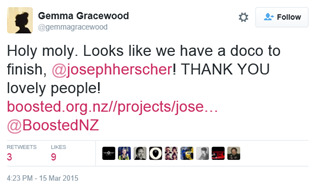
Robin Murphy and her team producing The Pot Luck Webseries were true to their craft and posted many thank you videos like this one here.

1. Direct Mailers
If you are using an email system like Mail Chimp, you can create some templates in the planning and preparation stages of your campaign. These can be ready to go, and sent to individuals as donations come in. Set time aside in your content plan, at the end of each day or every couple of days.
2. Boosted Blog Updates
Boosted has a channel for all projects that can be used to update your supporters with messages, images and video. It helps to keep those people engaged with the campaign, and with the development of the project and it’s a perfect place to say thanks. The team from Loons Theatre Trust who ran their campaign Begging For It, were masters of saying thanks every step of the way.
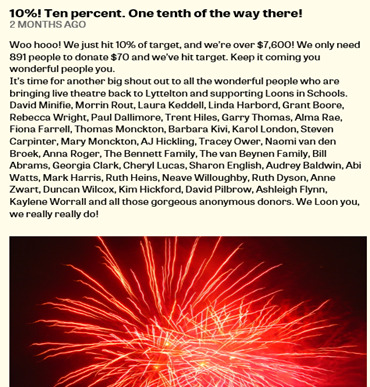

4. The Final Thank You
Crafting a your message post-campaign ties up the loose ends and allows you to thank EVERYBODY involved, including your internal project team. You can be creative with this; make a video or a handwrite something; try and make it memorable so it sticks with people.
Remember to:
1. Thank your donors and supporters
2. Recognise your team’s efforts, many who may be helping out on a volunteer basis.
3. Tell everyone how the campaign went; how you feel; how the team feels.
4. Give special thanks to your high value donors – this may be the handwritten note.
5. Show people where the money went and the tangible impact it has created.
During your campaign it can feel like you are “asking, asking, asking”! So balance every “ask” out, with a “Thank you”. It helps!
Be gracious, and practice the art of receiving. Think of it as a REALLY good habit to cultivate that goes hand in hand with engaging your networks, giving them reason to support you in your next campaign!
Remember you have access to all your donations on Boosted, unless the donor chooses to be anonymous.
This is your list, this is your beginning, so use it!
This blog was written by Simone Hunter, General Manager of Boosted. To read more about Simone, visit our website.
0 notes
Text
The 5 W’s for a Crowdfunding Pre-launch Event

The who, what, when, where and why of a pre-launch event
WHY should I have a pre-launch party?
To let people know you have a crowdfunding campaign coming up!
A common misconception is that you should spring your crowdfunding campaign on your friends, family and networks. Not true! We’ve found the best results come from letting people know well in advance that you will be doing one. We at Boosted have also found that it takes “three asks” to get people to donate.
Build momentum for your campaign so that on launch day everyone is ready to celebrate and donate on the first day! You will get so many warm fuzzies from seeing how many people support you.
WHO should I invite?
Friends, family, potential big donors, anyone who wants to celebrate your art and wants you to be successful! If you have done a network chart send the word out to them.
WHEN should I do it?
There is no golden rule to this, but generally a couple of weeks out from your launch date.
WHERE should I do it?
In a place where you feel comfortable to do it. Somewhere that you can celebrate and/or show what you do as an artist. This kind of depends on the ‘What’ section.
WHAT should the event be?
Well something that relates to you! You and your campaign.
Here are some ideas:
● If you are a local community printmaking group looking to crowdfund a new printing press maybe have an open day where people can try out some sort of art making.
● If you are a musician - great! Have a gig with a cover charge and let people know you will make a bulk donation on their behalf on the first day. During your performance remind people why they are there and what they are celebrating! Tell them to spread the word.
● The Loons Theatre Trust teamed up with local business Freeman’s cafe in Lyttelton for their pre-launch event. The Loons are setting up a new theatre in Lyttelton so they are rallying the whole community and local businesses to get in behind it!
If you want a hand brainstorming get in touch with a Boosted Ambassador and they can help talk through some ideas.
TIPS: ● During the event encourage people to take photos and share them on social media. ● If you aren’t good at public speaking, get an MC or have a poster up around saying you are running a crowdfunding campaign soon. Make sure to mention the date of when your campaign starts as well!

This blog was written by Gemma Syme, our Christchurch Boosted Ambassador. To read more about Gemma and the Boosted Ambassadors, visit our website.
#boostedtoolkits4#crowdfunding#boosted#artsfoundation#arts#fundraising#event#launch#prelaunch#fundraisingevent#prelaunchevent
0 notes
Text
4 Video apps to use for your crowdfunding campaign

Want to engage with your audience using video? Great idea!
Video is a great way to connect with your networks and let them know about you, your work and how you are going with your crowdfunding campaign.
Got to 50%? Send out a Vine celebrating it!
Doing a live event? Stream it on Periscope and remind people to check out your crowdfunding campaign online.
Here are some great apps that you can use.
Main Campaign video
BEFORE YOU START
• Make sure you have a good room to record if you need to create your videos first • If you want to talk during your video, make sure there isn’t a lot of noise so you get good quality audio
1. Cute CUT
What it’s good for: Cute Cut is a simple video editor that you can put together a basic video. You can also add music, titles, effects and a voice over. How to use it:
• Make sure you have the video/s & audio you want on your device. • Start a new project by pressing the ‘+’ in the top left hand corner. Choose the settings you want (pick the settings for where the video will end up. Is it going on Youtube, Instagram or somewhere else). • Click on the ‘+’ sign on the left hand side of the screen to start adding content. You can add videos, photos, text, drawings, and music or do a voice over. You can then move content around and edit it by double tapping whatever clip you want to edit. • Once you have a video you are happy with you can export the video to your device’s photo album, or directly to email, YouTube or Facebook. Here are some more videos on how to use Cute CUT
Compatible with: iOS (Mac) Amount: Free
During your campaign
People love seeing how you are getting on with your work and campaign, so video is a great way create some excitement and keep people update.
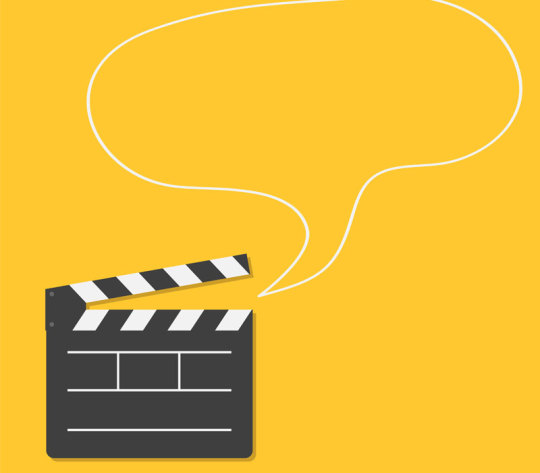
2. Vine
What it’s good for:
Filming short clips (up to 6 seconds) to engage with your audience and let them know what is going on behind the scenes. Humour works well on Vine!
How to use it:
Sign with Twitter. To make a Vine, click on the record button on the middle, bottom of your screen. Hold down on the video screen to start recording, and you can stop and start recording and also add music at the end. Don’t forget to hashtag (check out the #crowdfunding vines for ideas https://vine.co/tags/crowdfunding)
Compatible with:
iOS, Android, Windows
Amount:
Free
3. Periscope
What it’s good for:
Running a live event during your campaign? Stream it live!
How to use it:
Sign in with twitter, click the live broadcast, write in a title about what is happening (feel free to use a hashtag), and start broadcasting! Afterwards it will save your video so you can save it to your phone, and if you want you can upload it to Youtube and Facebook. Don’t forget you can interact with people live during a broadcast, so remind people to go and check out your crowdfunding campaign as well.
Compatible with:
iOS, Android
Amount:
Free
4. VIBBIDI
What it’s good for:
This is the new kid on the block and still in testing, but you can sign up for an invitation to try it on their website. This is a great app for putting together short clips that you can post to Instagram and Twitter. You choose a variety of clips that you want and edit them to a set duration, add a filter to each and then you can add music from Spotify.
How to use it:
Make sure you have the clips you want to use on your device. Log in with either a VIBBIDI username, Facebook or Instagram. To make a video click the button in the bottom, middle of the screen. Here you can choose one of four options (all options have a 3 second ending where you can write text).
1.1 second x 12 clips (with a 3 second ending)
2.2 second x 6 clips (with a 3 second ending)
3.15 second x 1 clip (with a 3 second ending)
4.30 second x 1 clip (with a 3 second ending)
Edit the clip/s how you want it and then add a filter and music to your clips.
Compatible with:
iOS
Amount:
Free

This blog was written by Gemma Syme, our Christchurch Boosted Ambassador. To read more about Gemma and the Boosted Ambassadors, visit our website.
#boostedtoolkits4#boosted#crowdfunding#artsfoundation#arts#fundraising#video#vine#apps#marketing#tools
1 note
·
View note
Text
Your Crowdfunding Checklist: The Dinner Party
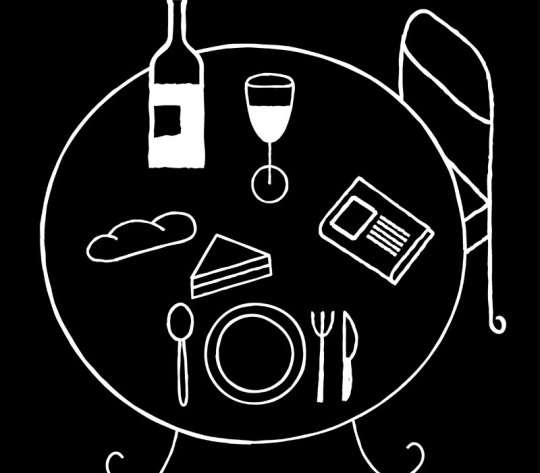
If you can host a dinner party, you can run a successful crowdfunding campaign.
Hosting a dinner party can be a triumph or disaster! Whether it’s a backyard BBQ, birthday bash, potluck or your best 8-course degustation extravaganza for a few or many, there are certain features of hosting good ones that anyone can master. The same is true for getting your project over the line on Boosted. Yes, you can do it!
Here is our checklist to help ensure that you’re good to go… and while you’re at it, take inspiration and kick off your campaign with a dinner party to boot!
What’s for dinner?
Eating is a shared experience, and your project page on the Boosted website is the food. You want to be sure it all looks and tastes great! The good ingredients are: a clear and catchy title, text that tells your story, describes how your project is unique and contributes to your vision, and your video is like the dinner menu, which reveals everything that will be experienced from your project kitchen. None of it has to be fancy, choosing and reducing down quality ripe tomatoes, garlic, oregano, olive oil, sea salt and pepper makes for an excellent spaghetti marinara sauce. In your menu, remember to acknowledge the other cooks in the kitchen: your sponsors and match donors.
Who is invited?
Well everyone in your network and beyond, of course! But your funding target shares a reciprocal relationship with how much your network and key donors can give, just like how much food (think funds!) you’ll need for the size of your dinner party (think project!)
Analyse your guest-list and communicate to your network in the right way. Your nearest and dearest will certainly come along to your birthday and give. Some people might have dietary requirements and may not use Facebook events or Twitter to organise their social calendars. So be sure to modify your invitations and menu to the particular needs of the invitees: remind them in person, on the phone, with text messages and direct emails. Getting the RSVP from your guests (donations to your project!) generally requires asking 3 times and in 3 different ways.
When is the party?
Plan your time accordingly. Just as you’re thinking about when to have your dinner party, including when to send out invites, cooking times of menu items, and the timeframe of the dinner party itself, you’ll want to create a content calendar for your campaign. The menu is the grand invite to your project.
Appetisers and snacks throughout the dinner are your social media posts with snippets of insights and attention-grabbing delectables about your work and the people involved. The entree can be a key launch event or big email blast that everyone tastes. Drinks and water throughout your campaign are those more personal calls and quiet conversations every step of the way. There will definitely be that moment in your dinner (campaign!) of great quiet anticipation, where the main hasn’t arrived and nothing is happening. Don’t fear! Savour this moment with your best yarn or something unexpected about your project. Enjoying the main course is reaching 65%. Eyeing up the dessert, which, like everything sweet, is the last stretch of your campaign and what everyone wants. It needs to deliver directly to the sweet buds, so be direct and ask your network to get you over the line. Over 100%? You can manage this with some finishing touches: after dinner mints, coffee, tea and maybe even a wee port to make your ‘dinner’ that extra something special.
My mother once said: “Life is a party and everyone is invited!” I’m sure she’s right, so go into crowdfunding campaign with that attitude, and you’ll be right.
You can download a Handy Boosted Project Content Checklist here!

This blog was written by Charley Davenport, our Wellington Boosted Ambassador. To read more about Charley and the Boosted Ambassadors, visit our website.
0 notes
Text
5 TOP TIPS FOR CROWDFUNDING VIDEOS

1. Be You!
People want to join you on your journey. The reason that people donate is that they want to engage with you and what you are doing, and it really helps when they can see the real people behind the scenes.
2. Keep it Snappy
I currently have 1 million tabs open in my web browser at the moment, so I’m probably not going to watch a 15 minute epic about your campaign when there are kittens cuddling and wearing bow ties right at my fingertips. A pitch video should be around 60-90 seconds. That’s all!
3. Keep it simple
In your video we want to get to know you, but in 60-90 seconds you won’t be able to fit in the complexities of your personalities and the formative moments in your artistic career. SO - what to include (with approximate timing):
1. Introduce yourself (15 seconds) 2. Tell people about your project, how awesome it is and how committed you are to it (15-30 seconds) 3. Ask for their support. Explain why you need their help, and what the money you raise will go towards (15-20 seconds) 4. Let them know if you don’t reach your goal you won’t get any money. How important their contribution is (10-15 seconds) 5. Thank them again! (5-10 seconds)
4. Remove barriers What’s the point of making a crowdfunding video? To get people to donate to your campaign! What you need to do is remove as many barriers as you can between your networks clicking that “Donate” button. Make things as easy as possible. Make sure you utilise the functionality of the platform you are posting to so that it’s easy for people. Here are a few tips for Facebook and YouTube.
YOUTUBE • Title your video properly and add a description. "cfund_1.mov" for a title doesn't really let me know what you are up to. • Make sure the first thing you put in your video description is the link to your crowdfunding campaign. Don’t feel like you are being pushy, you should be excited! This is the whole point of what you are doing. • Add annotations to your video that link to your Boosted campaign. YouTube have made a video on how to do that. Take a look at the screen shot below for an example:
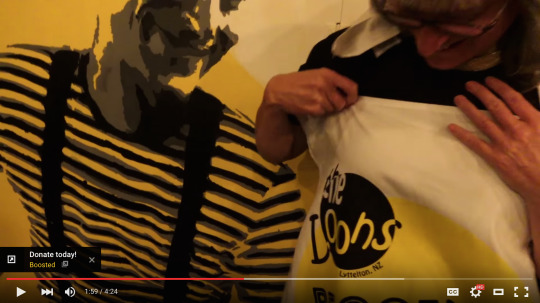
FACEBOOK •Upload your video directly to your Facebook page. Make sure to fill in all the details so that people know what you are doing and asking them to do. Check out more here. •Create a call-to-action. With Facebook videos you can now create a call-to-action where people can click to “learn more” so you can add a link to your campaign. Here is a great link with more information.
5. Push the video!
Go, go, go! Don’t let it just sit there, spread the word. Include it when you are sending out an email to potential donors, post it on your social media - let people know. If you get a good response from people about the video don’t be afraid to post the video on your social media more than once and also ask people to share it. -------------------------------- There ya go! But my secret extra tip is...have fun! You might be nervous about crowdfunding, but it's also exciting. You have something great to offer, and excitement is contagious. Happy fundraising!

This blog was written by Gemma Syme, our Christchurch Boosted Ambassador. To read more about Gemma and the Boosted Ambassadors, visit our website.
0 notes